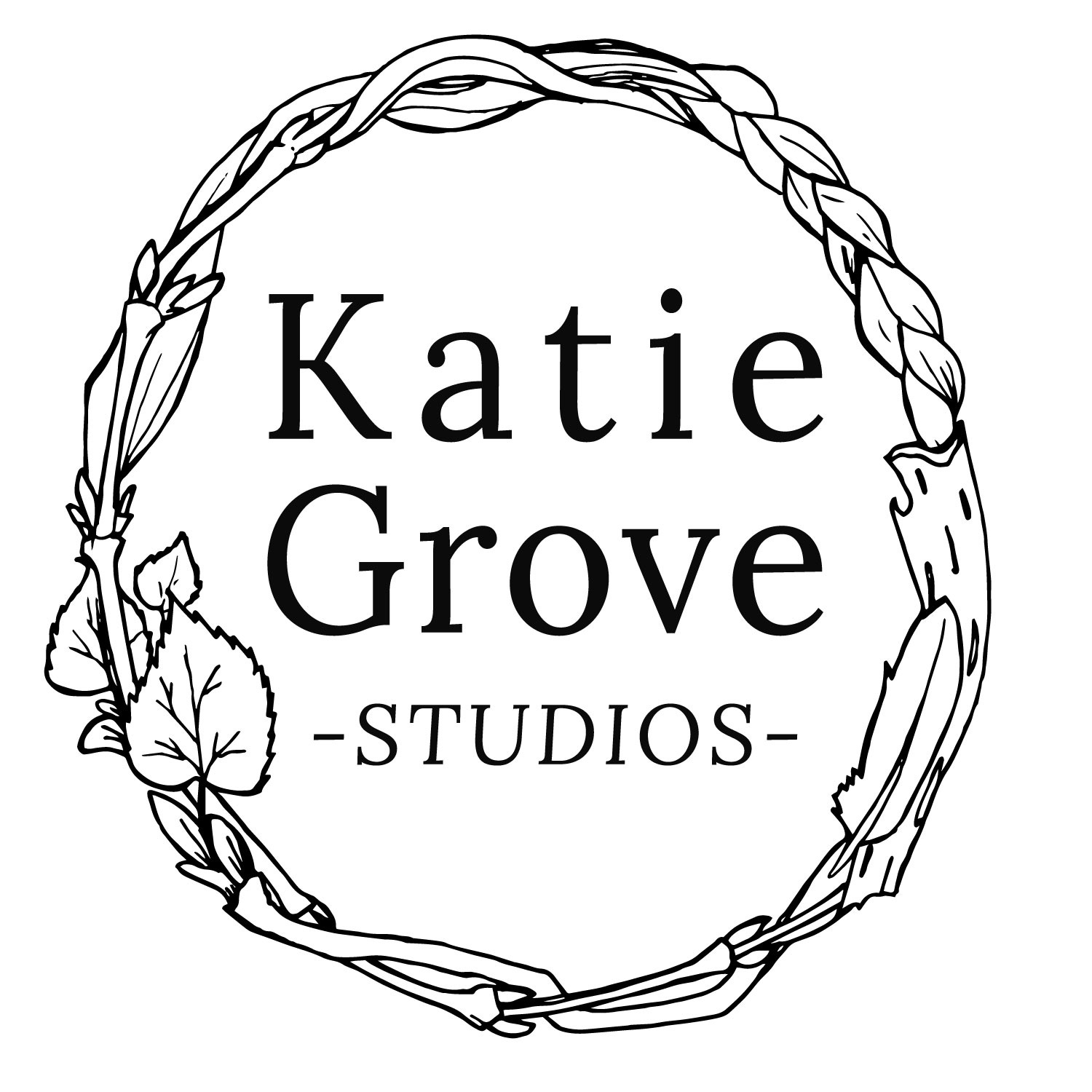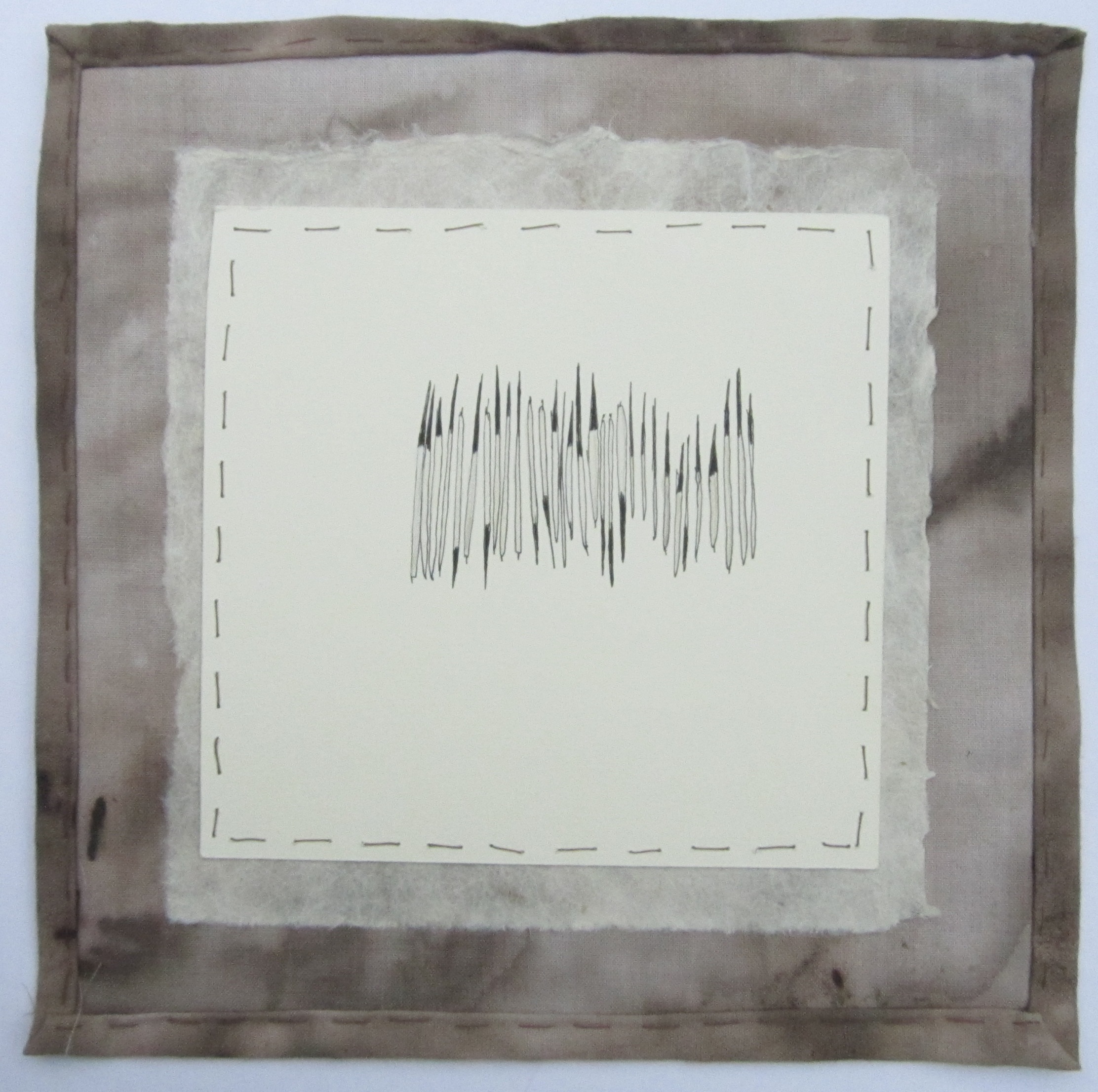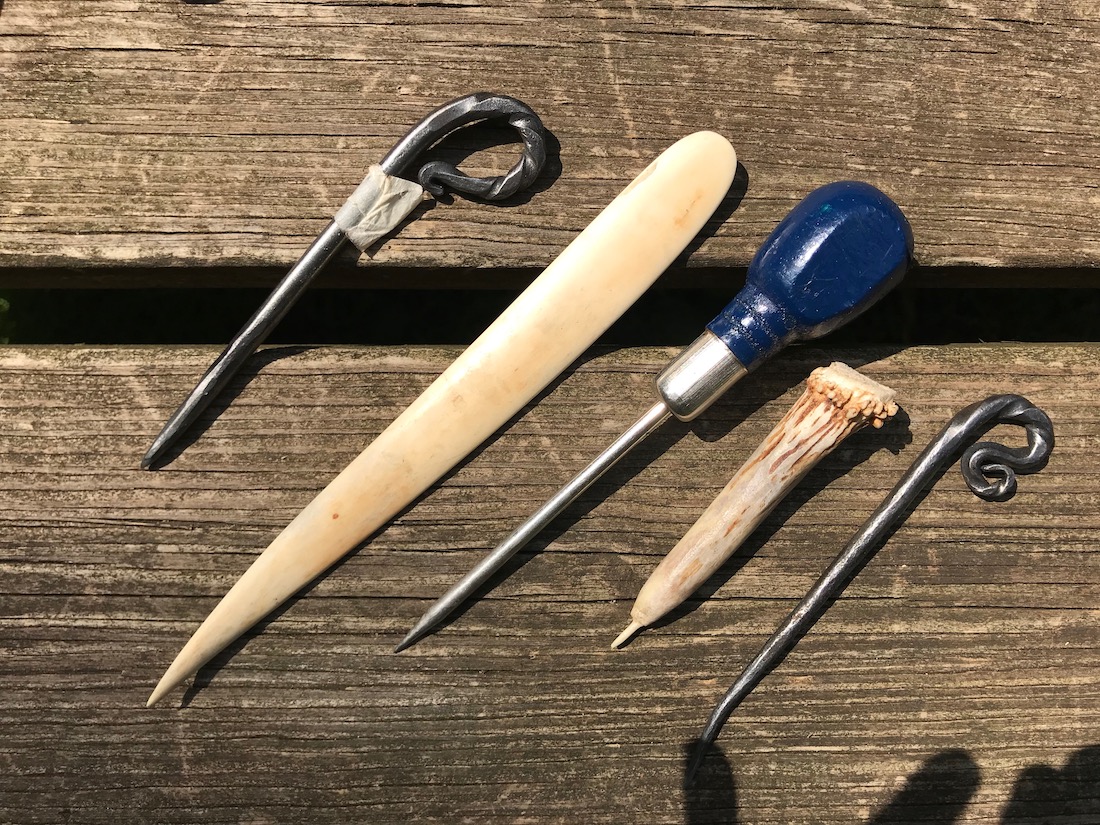
The Basketry Toolkit – Katie’s Essential List of Tools for Making Baskets
Your basketry toolkit is your best friend. Whether you are going into the field or working in your home, being able to reach for just the right tool whenever you need it is the greatest feeling! In this post I’ll share my tried and true essentials for your beginner kit.
The beginner class essentials
- Scissors
- Pruning shears
- A knife
- Utility blade
- Awl
- Packing tool
- Needle nose pliers
- Small clips
- Spring clamps
Scissors
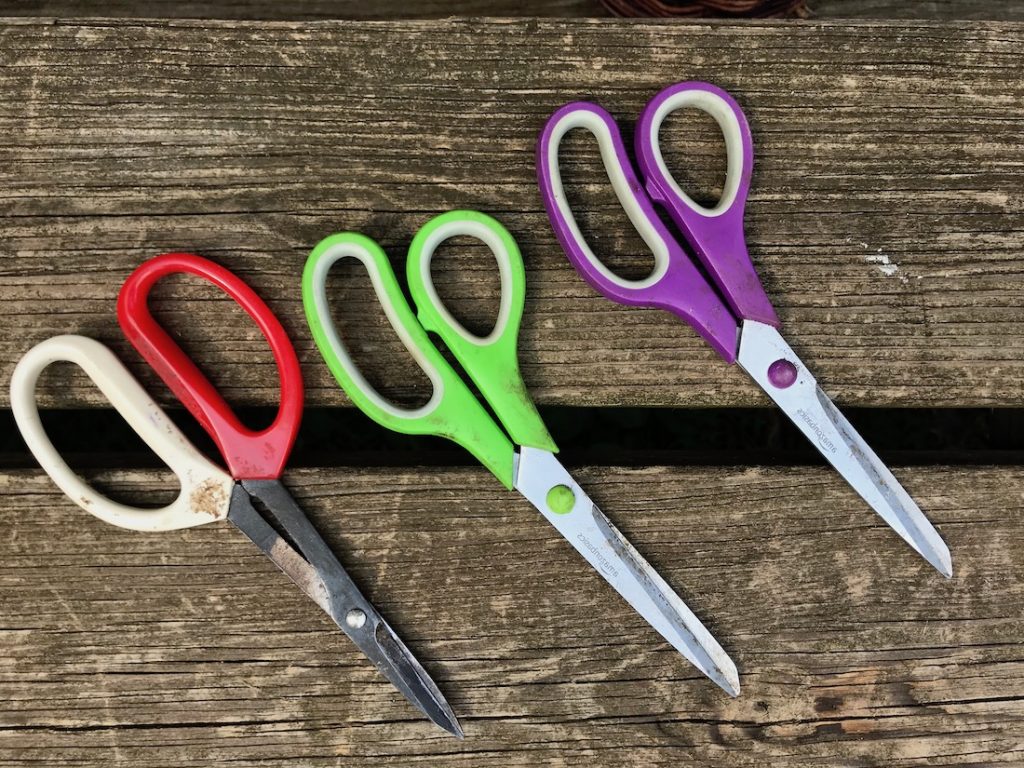
cThese are pretty important. They are used to cut bark, grasses, and all manner of plant material. My absolute favorites are the red and white handled basketry shears. The slim profile allows you to cut bark strips much more accurately than regular scissors and they are pretty strong. You won’t regret getting these, but if you want something else then pretty much any regular cheap-o scissors will also do most jobs. I like to keep a few regular pairs around so I can use them for rough work and the basketry shears from more precise cutting. Don’t use your best sewing scissors for basket work- they will get beaten up fast.
Find the basketry shears here- http://www.basketmakerscatalog.com/ps/scissors-shears-etc/976-basketry-shears.html
Pruning Shears – Sharp shears = happy basket makers! Please, if you bring those old, totally dull, rusty pruning shears out to harvest you will be sad. And I will be sadder because I know how much better it can be. These are the number one abused and mis-cared for tool out there. Get yourself a pair of nice new ones and take good care of them. You get what you pay for with these and I highly recommend Felco as a brand, with the model below being the high performance one. The others are probably decent as well. If you want to save some $ then I’ve gotten $20 or $30 pairs at the hardware store and they do well too, but don’t stay sharp as long.
Find Felco pruning shears here

A basic knife – This is your all purpose cutting, whittling, harvesting, splitting knife. Something fixed blade that is several inches long and sturdy is a good choice. I like Morakniv best as a company. They have a crazy number of knives available and I’m sure many of them would be great. The basic companion is the one I use most often as it is a size that can do precision and rough work well. It’s only $20 so it won’t set you back too much, but they have cheaper ones in metals that don’t stay sharp as long.
Find the basic companion Morakniv (and so many more) here
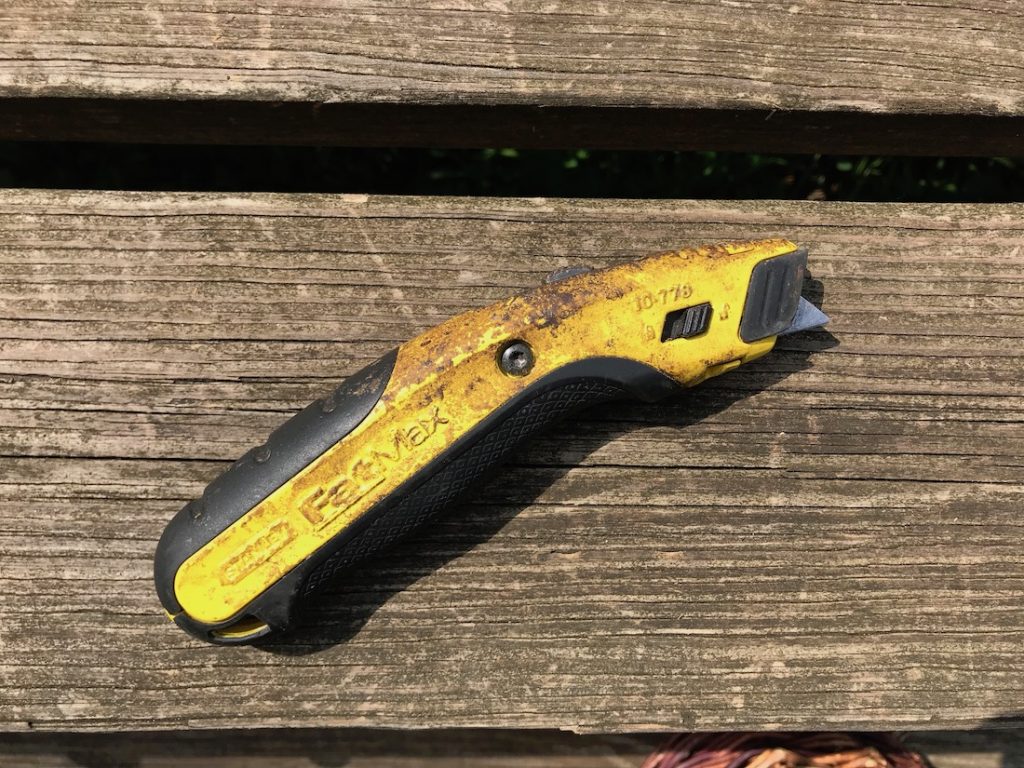
Utility blade – This one is really helpful for working with bark in particular. I use it to score the bark while still on the log and also to start splitting thicker strips during the processing. Pretty much anything will do, but sturdy is always good. Be sure to get a pack of spare blades.
Awls
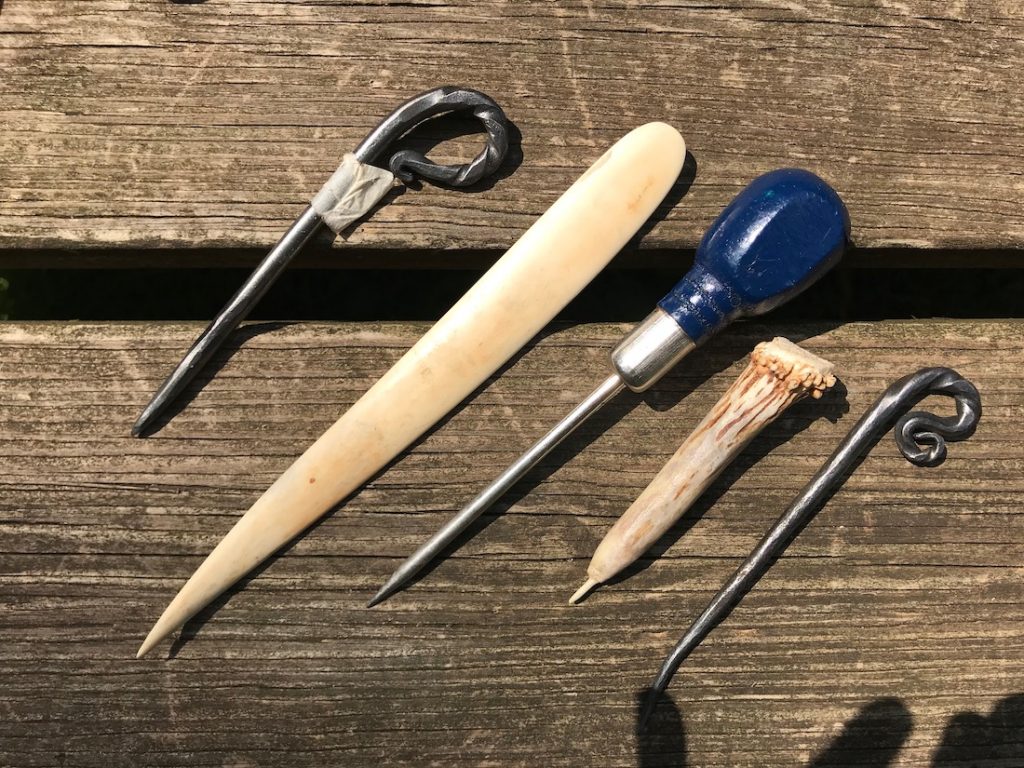
What a great tool! Basically a pointy piece of metal, there are a couple of different uses for an awl. They are used for poking holes, opening up weaving spaces, finishing rims, and a ton of other random tasks. I have two awls: a sharp, narrow one for poking holes and a wider, less sharp one for opening spaces. For beginning basket makers one is fine. I have a blacksmith who makes a specific awl for my classes that work well for both purposes. ( If you are interested in ordering one reach out to me). Bone awls are also great for many purposes.
Find a selection of other awls here
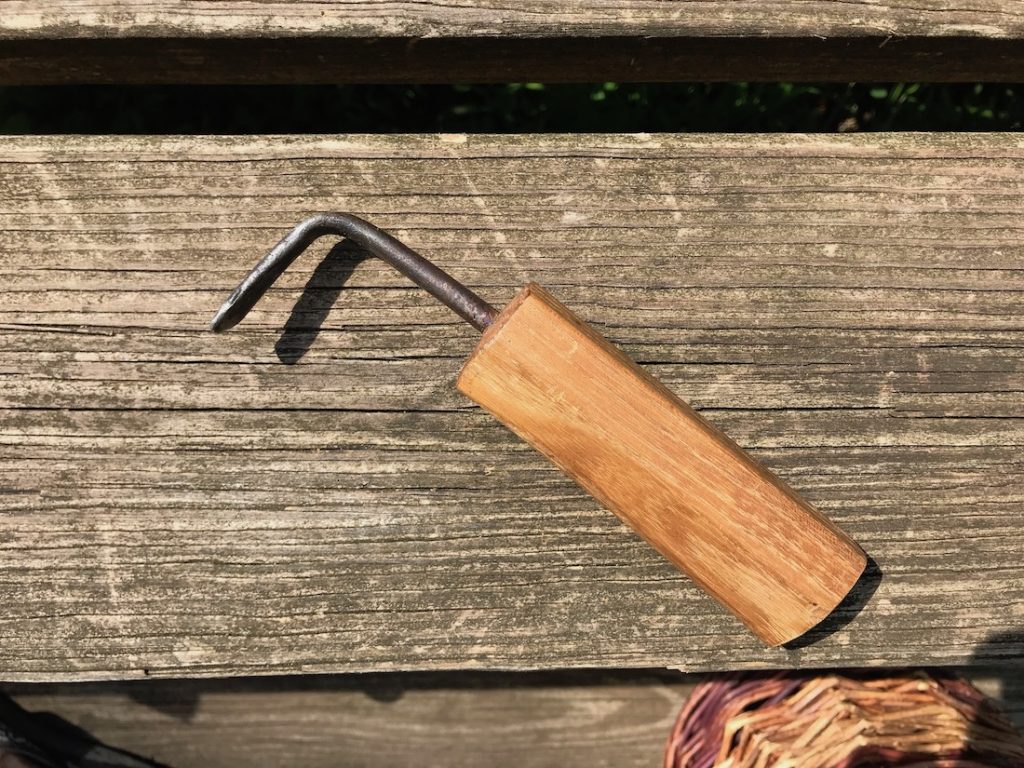
Packing Tool – This is for packing down rows of weaving and is a really great tool to have. Ones that are made for basketry typically work well with their bent profile, but you can improvise as well with other materials. If you are going to improvise a tool please don’t use anything sharp- you can easily slip and either scrape yourself or your basket materials.
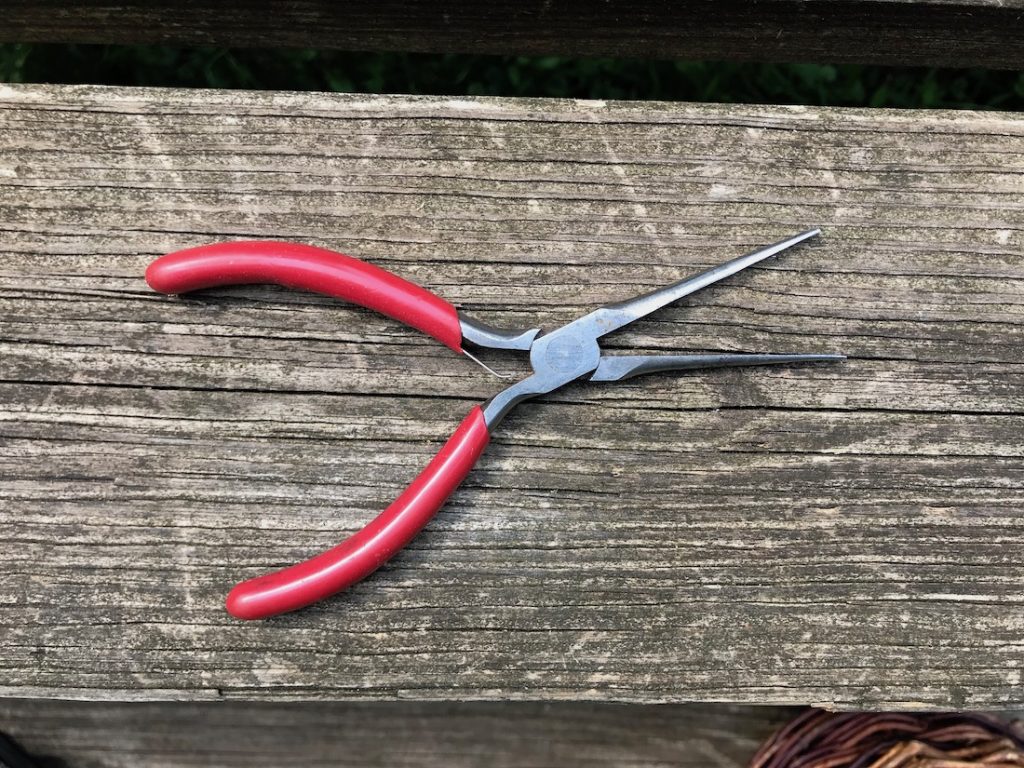
Needle Nosed Pliers- Not too much to say about this one. Something thin, with a slim profile is great. Get them at your local craft or hardware store. Just a nice tool to have around to shave your hands and fingers from doing too much gripping when pulling things tight, ect.
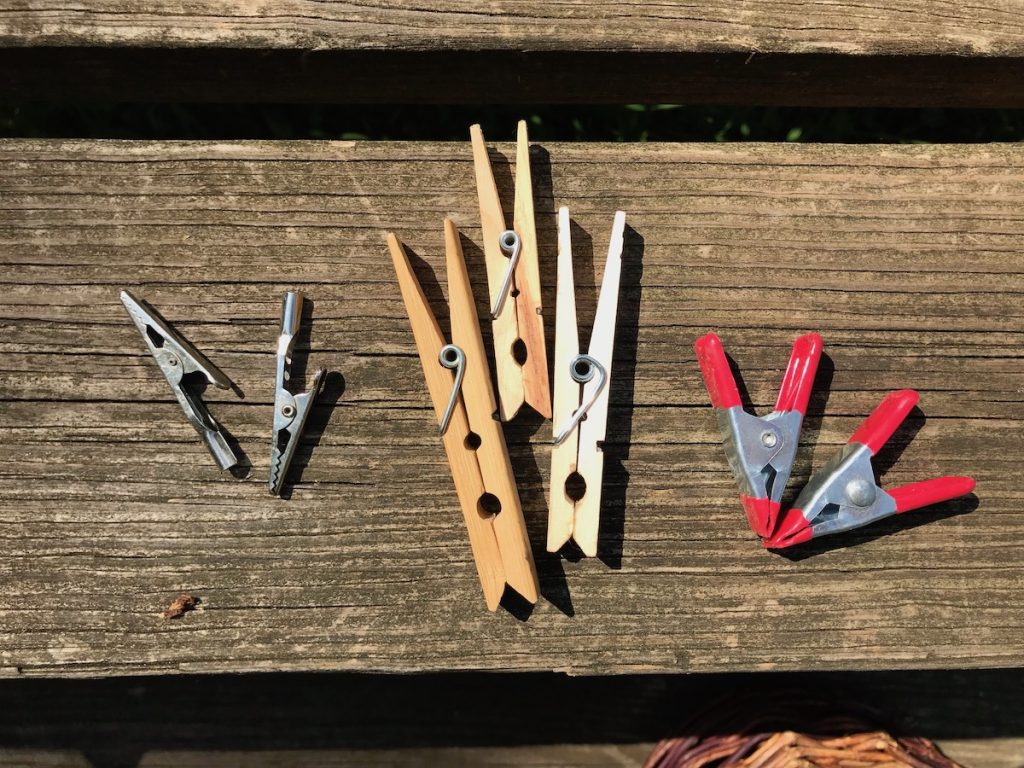
Small clips- These are essential! Used for holding rims on and all manner of random tasks. They tend to disappear quickly so get a big pack of memorable looking ones. Clothespins do the trick, but something thinner in profile is nice for fitting in tight spaces. The clips on the left in the picture are acceptable, but the teeth sometimes leave marks. Don’t leave any clips on your basket when it is submerged in water for an extended period- it can leave stains.
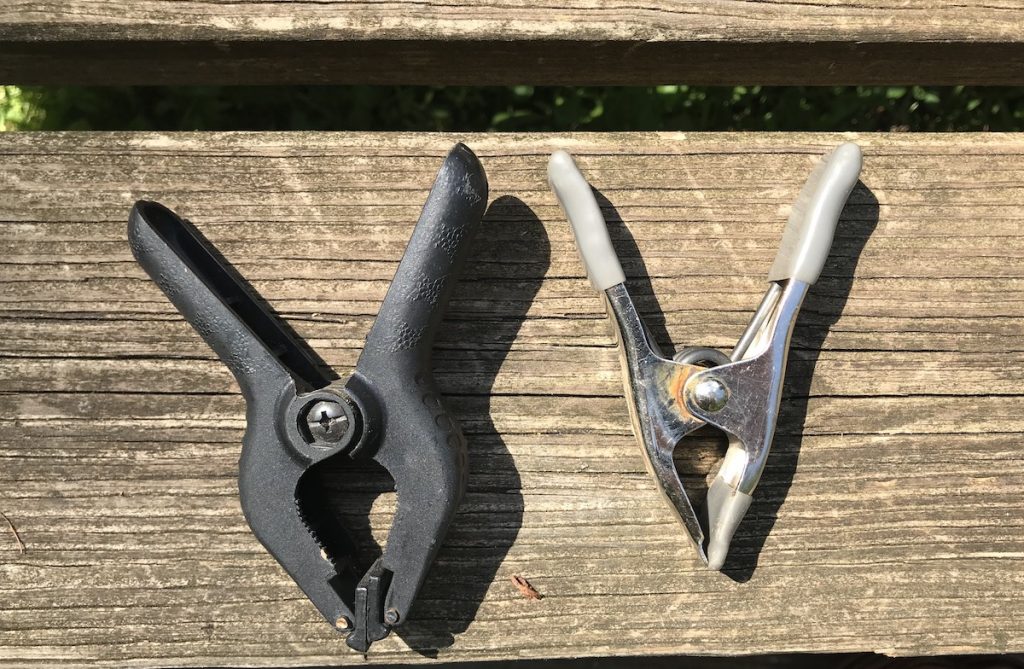
Spring Clamps – For heavy duty clamping this is essential. Get yourself 5 or 6 to start. I use them a lot in larger random weave baskets, large rims, and for securing coils of bark while they dry. Your basic hardware store will have them, or you can always look online. When searching online for them be sure to buy ones that are 4-6″ – not the small ones.
A culture of caring for our things
Putting love into your tools and taking care of them is something I value. In a culture where there is a ‘disposable’ attitude towards our belongs how can we take a new approach that is really an older one- having things that we keep for years to come.
Good luck in your basketry journey and may your tools be your good friends for many years!
